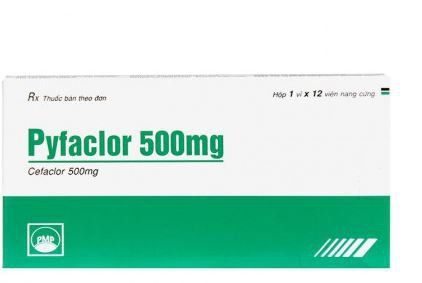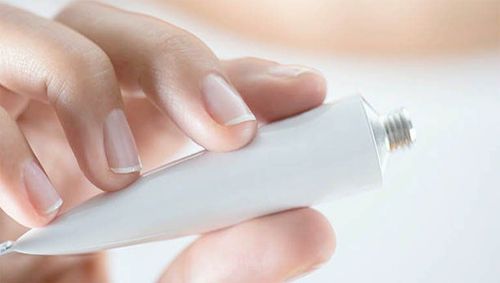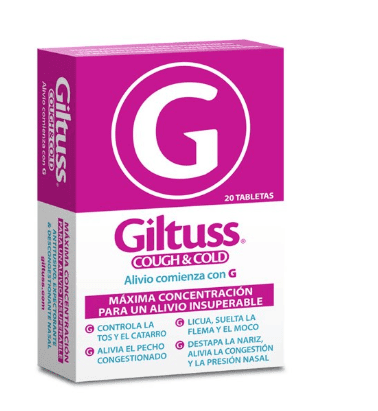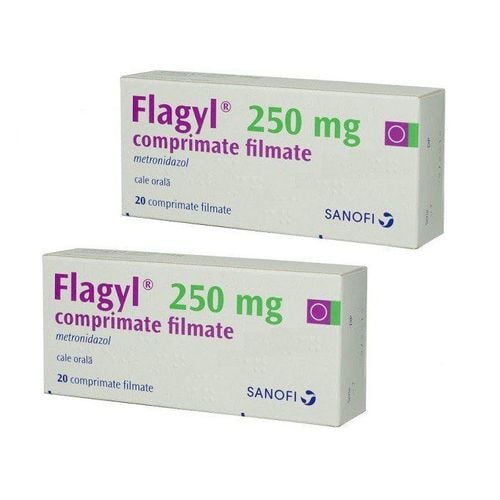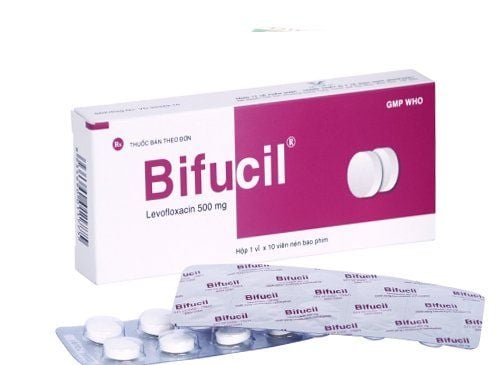This is an automatically translated article.
What is Clathepharm 1000? Clathepharm 1000 has Amoxicillin and Clavulanic Acid as the main ingredients, belonging to the group of antiparasitic, anti-infective, antifungal and antiviral drugs. So what does Clathepharm 1000 do?
1. What are the effects of Clathepharm 1000?
Clathepharm 1000 is prescribed by doctors for the short-term treatment of infections such as:
Upper respiratory tract infections: Sinusitis, tonsillitis, otitis media with common antibiotics but no effect. Lower respiratory tract infections caused by beta-lactamase-producing strains of H. influenzae and Branhamella catarrhalis, such as acute and chronic bronchitis, pneumonia. Severe infections of the urinary tract - genitals caused by strains of E. coli, Klebsiella and Enterobacter producing beta-lactamase such as: cystitis, urethritis, nephritis, pyelonephritis; gynecological infections. Bone and joint infections, intra-abdominal and dental infections, other infections... Skin and soft tissue infections: wound infections, boils, abscesses.
2. Dosage and usage
2.1. How to use Clathepharm 1000 is prepared in the form of film-coated tablets, for the best effect, patients should take the drug before meals and should take the whole tablet, do not chew or crush the drug.
Note: Users should take the drug at the beginning of a meal to minimize drug intolerance in the stomach and intestines. Should only be treated within 14 days if the disease does not improve, you should go back to the doctor.
2.2. Dosage For adults:
Treatment of mild infections: Clathepharm 1000 may not be needed. Treatment of severe infections: Use 1 oral dose of Clathepharm 1000 (Amoxicillin 875 mg and clavulanic acid 125mg) x 2 times/ day. For children: Patients weighing 40 kg or more use the same dose as adults. For children under 40 kg who do not use Clathepharm 1000 tablets, they should be treated with drugs in the form of suspension or pill form.
For the elderly: Use normal dosage without adjustment
Patients with renal failure need to adjust dosage according to creatinine clearance:
Creatinine clearance >30 (ml/min): Oral 1 Clathepharm 1000 tablet/day. Creatinine clearance from 10 to 30 (ml/min) or creatinine clearance < 10 (ml/min): Do not use Clathepharm 1000. For users with hepatic impairment: Dosage should be cautious, consultation is required. your doctor and should have your liver function checked regularly.
3. Overdose
Clinical evidence shows that clathepharm 1000 is quite safe and benign, in case patients use excessive doses, the drug also rarely causes serious reactions even when used at high doses. .
However, in the case of patients with reduced kidney function and poor blood-brain barrier, the injection will cause symptoms of toxicity. Mild or severe reactions will depend on the hypersensitivity of each user's body.
The most common manifestation is hyperkalemia or hyperkalemia because the clavulanic acid component is administered as the potassium/potassium salt. To treat this condition, your doctor may prescribe hemodialysis to remove the drug from the body's circulation.
4. Caution
Do not use for patients who are allergic to beta-lactam drugs (penicillins and cephalosporins). In patients with a history of hypersensitivity to penicillins, severe reactions or death may occur. Use with caution in patients with a history of jaundice or liver dysfunction due to use of amoxicillin and clavulanic acid or penicillins because the clavulanic acid component increases the risk of intrahepatic cholestasis. Use with caution in patients with manifestations of liver dysfunction such as cholestatic jaundice. Careful use of the drug in patients with moderate and severe renal impairment should pay attention to the dosage. The drug should not be used for a long time because clathepharm 1000 promotes the development of resistant bacteria. Use in pregnant women: Experimental studies in the reproductive process of rats have demonstrated that when administered by injection or orally, neither drug affects the development of the fetus, does not cause malformations. . However, patients should still avoid using the drug during early pregnancy, should only use it when prescribed by a doctor. You can take the drug while breastfeeding, but you should consult your doctor for advice.
5. Unwanted side effects
Related to intestinal and stomach disorders: vomiting, nausea and diarrhea, loss of appetite, flatulence and taste disturbances ... Patients should stop using the drug immediately if there are symptoms. such as diarrhea, nausea, vomiting, fever or abdominal cramps (this is a risk indicator of pseudomembranous colitis). Skin disorders: hypersensitivity reactions, skin rash, pruritus, angioedema, hypersensitivity, erythema multiforme, Stevens-Johnson syndrome, vasculitis, exfoliative dermatitis, toxic epidermal necrolysis. Related to renal and urinary dysfunction: Uncommon reactions such as crystaluria, interstitial nephritis. Related to liver function such as: Increased AST or ALT, cholestasis, allergic hepatitis, jaundice. Related to Blood and Lymphatic System Disorders: Leukopenia (including neutropenia and agranulocytosis), decreased platelet count, increased clotting time, and hemolytic anemia. Related nervous system disorders such as: Hyperactivity, dizziness, anxiety, insomnia, confusion, behavioral disturbances, dizziness may occur in patients with kidney failure and when users use high doses . Infections: This is less common than candida infections of the mouth, tongue, and genitals. Regardless of the patient's side effects, they should inform the doctor about the unwanted effects encountered when using the drug, so that they can take timely and safe measures.
6. Drug interactions
Clathepharm 1000 when used in combination with some other drugs can cause bad side effects or affect the effectiveness of other medicines. Therefore, the patient needs to inform the doctor about the drugs that you are taking such as prescription drugs, over-the-counter drugs, and dietary supplements. Specifically:
Clathepharm 1000 used in combination with Allopurinol can cause a rash reaction, especially in patients with increased uric acid. Using Clathepharm 1000 together with antibiotics, antibacterial drugs (chloramphenicol, tetracycline, erythromycin, or sulfonamides) may affect how well the medicine works. Using methotrexate and amoxicillin together may decrease renal clearance. Digoxin when used concurrently with amoxicillin can increase the absorption of Digoxin drug, so patients need to adjust the dose of digoxin. Coumarin anticoagulants may prolong bleeding time when used concurrently with the amoxicillin component of the drug, necessitating a dose adjustment of this drug. Use with Probenecid will affect the elimination of amoxicillin, increase and prolong serum concentrations of amoxicillin, prolong the half-life and increase the risk of toxicity. But amoxicillin and probenecid can still be used together in the treatment of genital tract infections and some other infections where high concentrations of amoxicillin in tissues and serum are required. In combination with oral contraceptives, amoxicillin may decrease the effectiveness of oral contraceptives.
Please dial HOTLINE for more information or register for an appointment HERE. Download MyVinmec app to make appointments faster and to manage your bookings easily.




